Great product! Makes me relaxed and helps me sleep. Smooth draw and flavor is great! Will continue to purchase in the future.
CBT Products
CBT Products: A Brief Breakdown
These days, the cannabinoid market seems saturated with new compounds popping up left and right. While this is true in some cases, other cannabinoids have been around for decades but just haven’t had their moment in the spotlight until now. This is the case for CBT products.
Originally discovered in the 1960s, CBT is a cannabinoid with lots to offer. Although not much is known about the mysterious compound, its effects seem to be positive, especially when used in unison with other cannabinoids. Discover more about CBT products today!
What is CBT?
CBT, or cannabitriol, was first isolated by scientists in the late 1960s and early 1970s, and it was found to be much more common in hemp than marijuana plants. The compound was actually first discovered in 1966, but its chemical structure wasn’t determined until a decade later in 1976. According to an article published in Cannabis Tech, scientists have identified nine slightly different types of CBT, all of which are believed to be synthesized from CBDA. While similar, each of these nine types of CBT has a slightly different molecular structure.
Although the compound is more prominent in hemp than in marijuana, CBT is not always present in cannabis, and when it is, it is only found in small concentrations. Because of this, it has been hard for scientists to extract and study its properties and effects.
Although there have been virtually no studies on the benefits or effects of CBT, the compound has popped up in some other studies. In 2007, for example, a study was conducted on the addictive effects of THC. Researchers were seeking potential compounds that could mitigate the psychoactive components of tetrahydrocannabinol. Their findings placed CBT as “the major degradation production of this reaction, demonstrating the ability of an antibody to catalyze a complex chemical transformation with therapeutic implications for treating marijuana abuse.”
In plain English, CBT was shown to mitigate the negative effects of THC on the body. That said, there are no other studies to confirm these findings. If they are true, however, it could mean that CBT is likely a non-psychoactive cannabinoid that, when taken alongside THC, can lessen psychoactive effects.
Another study, conducted in 1983, showed that CBT could potentially reduce intraocular eye pressure, so it may be useful in the treatment of glaucoma, just like many other cannabinoids. Some anecdotal evidence also suggests that the presence of CBT may enhance CBD’s effects on pain relief, but more research is needed on that topic.
Additionally, despite the lack of scientific research on CBT, many scientists are supporters of the entourage effect, or the idea that the presence of cannabis compounds, including cannabinoids, terpenes, and flavonoids, create a synergistic effect that enhances existing properties and produces more optimal benefits.
So, if there isn't that much research on the cannabinoid, why use CBT in the first place?
Out of the nine distinct forms of CBT, CBT-C has received significant attention partially due to its presence outside of cannabis. In fact, CBT-C is one of the only cannabinoids that exists naturally in other plants. CBT-C is also isolatable from a type of rhododendron used in Traditional Chinese Medicine that is still widely used to this day. This indicates that CBT may have potential medical applications, whether derived from cannabis or other medicinal plants.
Additionally, CBT is known to be a natural agent that prevents crystallization, which is great news for people using CBT via disposable vapes or carts, especially when combined with other cannabinoids. The presence of CBT in a vaping product may remove the need for external thinning agents that help in keeping the cart from crystalizing.
How Strong is CBT?
CBT is currently not known to cause any psychoactive effects, and its potency is thought to be similar to that of CBD. However, as previously mentioned, CBT needs to be further studied before any conclusive claims can be made.
How Are CBT Products Made?
CBT is a natural phytocannabinoid, so it is not inherently synthetic. That said, because it occurs in such low concentrations, CBT is often isomerized from other compounds. We know, we know. This sounds a lot like that chemistry lesson you didn’t really understand in high school, but it’s actually quite simple.
All cannabinoids are derived from CBGA, or cannabigerolic acid, also known as the “mother cannabinoid” or the “mother of all cannabinoids,” for obvious reasons. Because all cannabinoids, from CBD to THC, come from the same source, their molecular structures are strikingly similar. Cannabinoid isomerization simply refers to the process by which the chemical structure of one cannabinoid molecule is rearranged to form a different compound.
So, in essence, the atoms in CBD, for example, can be shaken up and arranged to create CBT, beginning with a preexisting compound but ending in the effects and properties of another. This is achieved by triggering a chain of chemical reactions that create the adequate conditions that help create a new compound. So, even though CBT occurs naturally in cannabis and other plants, there is too little of it to meet market demands, leading scientists to develop cutting-edge technology that is able to create more of it by using hemp-derived CBD.
Is CBT Legal?
According to the Farm Bill of 2018, CBT derived from hemp containing up to 0.3% THC is federally legal in the United States. Additionally, it is not scheduled under the Controlled Substances Act in the United States or regulated under the UN Convention on Psychotropic Substances.
That said, some states have taken the steps to ban hemp-derived cannabinoids, so be sure to check your state’s hemp legislation before attempting to purchase the cannabinoid.
Are CBT Products Safe?
CBT products are safe if and only if they are obtained from the right retailer. Since the FDA doesn't monitor the manufacturing or distribution of hemp-derived cannabinoids, finding a company committed to your safety is more than essential. There are a plethora of companies selling all sorts of hemp compounds, but there’s only a handful that you can trust.
Here at Diamond, all our products are made using organic hemp grown in the United States free from pesticides and herbicides. Our extraction processes are performed by knowledgeable and qualified scientists that keep safety and quality in mind. Additionally, all of our products undergo rigorous third-party lab testing that ensures the purity, potency, and quality of our cannabinoids meets a strict standard.
How Do CBT Products Compare to Other Cannabinoids?
CBT products are, evidently, much different from many of the other cannabinoids we offer here at Diamond. From what we know, it seems to be part of the non-psychoactive group of cannabinoids, including other compounds like CBD, CBN, and CBDV. Other compounds, like delta 8, delta 10, HHC and delta 9, are psychoactive, with delta 10 being the mildest.
But how do their effects compare? In order to make matters a little easier to process, here’s a chart that explains each cannabinoid’s properties.
|
Cannabinoid |
Effects |
|---|---|
|
Delta 8 |
|
|
Delta 9 |
|
|
Delta 10 |
|
|
CBD |
|
|
HHC |
|
|
THCV |
|
|
CBN |
|
|
CBDV |
|
What CBT Products Do We Sell At Diamond?
At Diamond, we’ve got an array of products that contain CBT. Although research on the compound is still in its infancy, it seems to have a positive safety profile not unlike those of other, better studied cannabinoids, so ingesting CBT from a reliable source like our store should come with virtually no short- or long-term side effects.
Our CBT products aren’t 100% CBT, as they’re part of our line of blends that allow you to reap the benefits of all your favorite cannabinoids in one delicious inhale. Using a blended product also allows you to experience the entourage effect, which occurs when different cannabinoids in hemp interact with each other and create a synergetic effect that amplifies the properties of each compound.
Our best-selling blended products containing CBT include:
- Snowman Vape Pen by Fresh (1800mg), which contains:
- 360mg of delta 8
- 360mg of CBT
- 360mg of CBC
- 360mg of CBN
- 360mg of CBD
- Pancakes Vape Pen by Fresh (1800mg), which contains:
- 360mg of delta 8
- 360mg of CBC
- 360mg of CBT
- 360mg of CBG
- 360mg of CBD
- Melonatta Vape Pen by Fresh (1800mg), which contains:
- 257.2 mg of delta 8
- 257.2 mg of CBD
- 257.2 mg of CBN
- 257.2 mg of CBC
- 257.1 mg of CBG
- 257.1 mg of CBT
- 257.1 mg of CBDV
CBT: Some Final Thoughts
CBT products can prove to be indispensable for cannabis users. From its potential abilities to offset the heavy psychoactive effects of THC to its promising properties that enhance CBD’s pain-relieving effects, CBT works wonders on the body, especially when paired with other cannabinoids.
States CBT Products Ships To
What is Hemp?
Hemp is cannabis with a Delta-9 THC concentration ≤ 0.3% by dry weight.
Federal Law
Consumable hemp products are federally legal and permitted to ship over state lines.
Frequently Asked Questions
Explore answers to our most commonly asked questions about CBD, our products, and more.
Can you refill CBT disposable vapes?
No. CBT disposable vapes are designed to be thrown out after the oil and battery are drained. They should never be refilled.
How do you hit a CBT disposable vape?
Hitting a CBT disposable vape is as simple as putting your lips to the mouthpiece and inhaling!
Do CBT disposable vapes get you high?
CBT does not appear to cause any psychoactive effects, meaning that if you use it on its own, it will not get you high.
Are CBT disposable vapes legal?
CBT disposable vapes are federally legal under the Farm Bill of 2018, which legalized hemp and all hemp derivatives. That said, CBT may not be legal in all states, so be sure to check your local legislation before attempting to purchase.
Are CBT disposable vapes safe?
CBT disposable vapes are safe as long as they are sourced from a reliable retailer that takes your safety seriously. At Diamond, we use organic, non-GMO, pesticide-free hemp to source all of our products. Additionally, our cannabinoids undergo rigorous third-party lab testing that ensures safety, quality, potency, and purity.






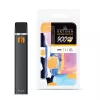
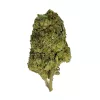
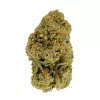
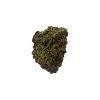
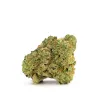

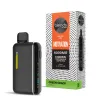


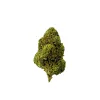
What People Are Saying
50,000+ 5-STAR REVIEWS